Student Pranava Pakala: The world is your oyster at Aalto!
Pranava studies Electronics and Nanotechnology and she believes that the field is the solution to most of the problems the world faces today

Want to hear more about Master's Programme in Electronics and Nanotechnology? In this webinar programme representatives tell you about the studies.
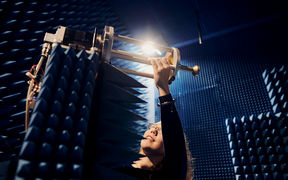
We are surrounded by wireless technologies almost everywhere we go, space technology is skyrocketing thanks to small satellites, and nanotechnology is enabling major breakthroughs in fields like modern computing and energy harvesting. In the Electronics and Nanotechnology Master’s Programme, the focus is strongly on creating these cutting-edge technologies needed to build sustainable and energy-efficient solutions for the modern world.
Some of the key enablers of developing new technology are semiconductors used especially in microchips. In Finland, there is a large cluster of companies specialised in the design and manufacture of semiconductors. These companies are investing heavily in the field to advance the country’s and the whole EU’s self-sufficiency in microchips. At the same time, the demand for professionals who have the skills to design semiconductors is rapidly increasing.
As a very high-tech oriented Master’s Programme, Electronics and Nanotechnology provides engineering students with all the necessary knowledge and tools to develop electronic devices and components that shape society for the better. During their studies, students get to use state-of-the-art software and, depending on their chosen major, do experiments in world-class research facilities like Metsähovi Radio Observatory and Micronova, which has the biggest cleanroom in the Nordic countries.
Electronics and Nanotechnology graduates have:
In the Electronics and Nanotechnology Master’s Programme, the language of instruction is English.
The tuition fee for this programme is 17 000 euros per academic year. Citizens of European Union (EU), the European Economic Area (EEA) or Switzerland do not pay tuition fees. Citizens of other countries must pay tuition fees.
Aalto University offers a small number of scholarships in the form of tuition fee waivers to fee-paying students. Scholarships can be awarded to the highest-achieving applicants based on the programme's evaluation criteria. Applicants are ranked according to the criteria outlined on the programme's webpage.
More information on tuition fees and scholarships at Aalto University is available at the Scholarships and Tuition Fees webpage.
The two-year Master’s Programme in Electronics and Nanotechnology comprises a total of 120 ECTS credits:
Students select their major at the beginning of the studies. The first semester consists of introductive common studies and the first Spring semester is dedicated to the common compulsory studies in each major. The second year is mostly dedicated to the elective studies and the master’s thesis. You can choose practically any combination of elective courses – from Aalto as well as other universities in Finland and abroad – that supports your studies and suits your interests.
More information about the programme content and curriculum can be found in the Student guide.
Teaching methods
Students can approach their engineering studies from both industrial and scientific perspectives. They are able to direct their studies either a theoretically-oriented manner or more towards hands-on practical applications. Thus, the programme is a combination of theoretical and practical courses that utilise different teaching methods: lectures, independent exercises, computer simulations, group assignments, and laboratory work. Upon graduation, students have a lot of hands-on experience of using different softwares and – depending on their major – working in laboratories, cleanrooms, and an astronomical radio observatory.
The programme collaborates closely with the industry: guest lecturers participate in courses and students get to do projects with companies. Additionally, about 50 percent of all the Master’s theses are written for a company.

Pranava studies Electronics and Nanotechnology and she believes that the field is the solution to most of the problems the world faces today

The new processor is suitable, for example, for 6G transceivers and encryption technology. The project encourages young people to study microelectronics; skills that are in high demand in Finland.
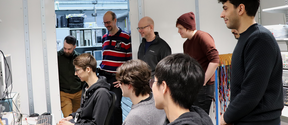
In the recent past, Aalto students implemented a simple processor. Now, they have further refined its structure and combined it with an AI accelerator.
In this programme, students can choose from five different majors depending on their interests and aspirations. All majors are closely connected to current research conducted at Aalto. The majors are:
1. Microelectronic Circuit Design
In the Microelectronic Circuit Design major, students learn to design microelectronics systems from RF-analog amplifiers to processor systems for use, for example, in modern wireless devices and wireless systems, remote sensing system sensor interfaces and autonomous cars. Since no application can run without an electronic hardware platform, this major also focuses on how we can decrease future devices’ energy usage and make them more sustainable. Additionally, upon graduation, students are able to integrate digital and analog radio-frequency circuits into the smallest wireless systems like the "Internet of Things" or implantable medical devices, and able to design digital systems like RISC-V microprocessors.
2. Microwave Engineering
In the Microwave Engineering major, students learn to develop microwave components for modern wireless devices as well as to understand new developments in wireless connections. The major covers interesting current trends, such as reconfigurable intelligent surfaces that can be used to control microwaves. In particular, students learn to design antennas for wireless devices and networks and predict how the waves propagate in different environments.
Microwave engineering is a field where future graduates will have an increasingly vital role in advancing sustainability. They are challenged to design new solutions while prioritising energy efficiency, durability, recyclability, more sustainable life cycles, waste reduction, and minimisation of environmental effects. This means, for example, improving the efficiency of antennas and reducing electromagnetic interference.
3. Photonics and Nanotechnology
In the Photonics and Nanotechnology major, students learn the principles of physics governing the properties and interaction of light and matter. The main focus is on applying these theories to the development and manufacture of state-of-the-art, green, and efficient devices while utilising, for instance, nanocarbon compounds and 2D materials. In the future, semiconductor companies need a growing number of experts who can make the industry more sustainable, and this major equips students with the necessary skills to meet those needs.
Semiconductor manufacturing technology and novel nanofabrication methods our students learn about can be exploited in many areas, including sensors, optoelectronic devices (solar cells, LEDs, lasers), photonic devices, and even nanoelectronic devices based on quantum physics. During their studies, students have the opportunity to develop components based on semiconductors in the biggest cleanroom research facility in the Nordic countries, Micronova – Finland's national research infrastructure for micro- and nanotechnology.
4. Space Science and Technology
The Space Science and Technology major has four focus areas: space technology, Earth observation, space physics, and radio astronomy. This includes activities such as building satellite systems and space instruments, developing microwave radar and radiometer methods for Earth observation, analysing space weather satellite observations, conducting numerical simulations of the Earth and other solar system objects, and utilizing radio astronomical techniques for studying the Sun and galactic as well as extragalactic objects. Students can select their study field(s) based on their academic or career interests.
Upon successful completion of the programme, the students will have the required skills to work in the highly international space industry, join a space agency, or pursue a career in space research in academia. The student will have the capability to work in ESA-led space mission development, understand the basic steps of space mission creation and science data analysis, understand the space environment and its interaction with technology, and understand the role of space technology in the sustainability of space and planetary environments.
5. Wireless and RF Engineering
In the Wireless and RF engineering major, students delve into the intricacies of transmitting and receiving radio waves through the use of antennas. They gain a profound understanding of how these transmitted waves propagate and interact within diverse environments. Additionally, students acquire the skills necessary to manipulate these radio waves to convey information effectively, as well as leverage them for environmental sensing applications, such as radar systems.
Wireless technology is undeniably ubiquitous, with an ever-expanding array of new applications continually emerging. Engineers in this discipline face the ongoing challenge of crafting innovative solutions that prioritize energy and material efficiency, fostering sustainability as they outperform current systems.
Aalto University is known for its international study and research environment. Every year, Aalto welcomes thousands of degree and exchange students from abroad. As the Electronics and Nanotechnology Master’s Programme covers globally relevant technologies and offers state-of-the-art research facilities, it is of great interest to international applicants – studies are conducted in multicultural groups. Additionally, many of our professors and researchers have international backgrounds and experience, bringing their global networks close to students.
At Aalto, students can improve their global competence by, for example:
The degree programme provides eligibility for scientific postgraduate studies in Finland. The skills learned in the programme create an excellent basis for doctoral studies at Aalto University, another Finnish university or top international universities. Doctoral graduates from Aalto University continue to researcher or other academic career or high-level business positions, among other things. Read more about applying for doctoral studies at Aalto University: https://www.aalto.fi/en/doctoral-education/how-to-apply-for-doctoral-studies
Employment rates for fresh graduates are extremely good as the electronics and nanotechnology industries are growing fast on a global level. Thanks to the students’ hands-on experience of different softwares as well as of working in laboratories and a cleanroom, they have a significant advantage in the job market. Additionally, many companies within the industry are actively involved in this programme, giving students the possibility to network with employers. Aalto University also has well-established career services through which you can get employed in Finland and abroad.
There is a large variety of Finnish and international employers in this field. Some examples of the companies our recent graduates work for are:
Graduates often start their globally-oriented careers in research- and development-focused tasks, eventually shifting towards different industry expert and management positions based on individual preferences. Since the program is very research-oriented, a popular option is to continue studies towards a doctoral degree. Some graduates also start their own companies or find employment in high-growth hardware startups in the field.
Typical job titles of recent graduates employed in companies include, e.g.:
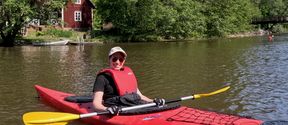
Lena Mielke studied Space Science and Technology in the Master's Programme in Electronics and Nanotechnology. During her studies, Lena was also able to realise one of her childhood dreams.

Alumna Maria Hieta majored in Space Science and Technology.

The award-winning master's thesis in space technology focuses on solving problems related to radio wave propagation in the upper layers of the atmosphere.

Graduates from the School of Electrical Engineering at Aalto University have very good employment prospects in positions corresponding to their education. On this page, you can find information about employment and career development five years after graduation.
The Department of Electronics and Nanoengineering conducts research in the fields of electromagnetics, micro and nanotechnology, radio engineering, and space technology. Our research groups collaborate actively with several national and international institutes and companies.
You can read more about the research at the Department of Electronics and Nanoengineering here.
Aalto University is among the top-ranked universities in the world regarding industry collaboration. As mentioned above, this programme collaborates with the industry in the form of projects, guest lectures, and Master’s theses. As a graduate, you can benefit from our connections. Aalto Industrial Internet Campus (AIIC) offers you the possibility to network with students from other engineering disciplines and prestigious industrial partners.
At Aalto, bridging different disciplines is made easy – students may choose their elective study modules so that their degree is a combination of science, technology, business, and arts. They can supplement their studies with courses from other Aalto schools and programmes as well as courses offered by other universities, including international. This multidisciplinary environment sparks new ideas, friendships, networks, and every so often, startups.
Department of Electronics and Nanoengineering (ELE) conducts research and arranges related teaching courses in the fields of electromagnetics, micro and nanotechnology, radio engineering, and space technology.

Micronova is part of OtaNano - Finland's national research infrastructure for micro- and nanotechnology, jointly run by VTT Technical Research Centre of Finland and Aalto University.
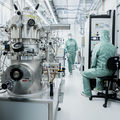
Satellite development began with Aalto University’s technology students’ course work. Now the goal is to achieve billions worth of turnover and a global satellite network.
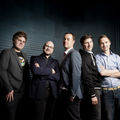
Curious about life at Aalto University? Our student ambassadors are here to share their firsthand experiences and insights on student life, academics, and campus culture. Join us for interactive sessions, casual chats over coffee, and engaging discussions with current students and alumni.

Applicants to the programme must meet the general eligibility and language requirements that are common to all Master's programmes in Aalto University.
Applicants meeting Aalto’s general eligibility criteria for master's studies are evaluated and ranked according to the evaluation criteria decided in advance for each study option. The applications to the Master’s Programme in Electronics and Nanotechnology are evaluated based on the following criteria:
| What is evaluated? | Content and quantity in relation to the applied study-option-specific requirements |
| Admission requirements / What we look for in an applicant |
A high‐quality Bachelor’s degree in electrical engineering, in physics, or in a related field is required. Excellent candidates with degrees in other fields such as information systems, engineering, natural sciences, or mathematics, will be considered if they can show to have acquired sufficient skills and knowledge. Background requirements depend on the chosen study field within the programme. Recommended background includes sufficient skills in
The Master’s programme should provide the applicant with genuinely new knowledge. Applicants with a previous Master’s degree of comparable quality and content in the fields of the Master’s Programme in Electronics and Nanotechnology or who intend to complete one, or who have a valid study right in this application target will not be accepted to the programme except for special reasons. The motivation letter should clearly indicate why another master’s degree is necessary. In most cases, non-degree studies are recommended instead. |
| Evaluated documents | Transcript(s) of records, degree certificate(s) |
| What is evaluated? | Grades of the previous degree(s) |
| Admission requirements / What we look for in an applicant |
The programme is looking for applicants with excellent success in their previous studies. This will be evaluated on the basis of the Grade Point Average (GPA) and results in key courses. The time spent on the previous studies will also be taken into account. Study success of the previous Bachelor’s degree is emphasized. Other previous studies are considered as well but the evaluation is primarily based on the bachelor level studies. Applicants who have previously studied at Aalto University, e.g. as exchange students, are also evaluated according to the grades, the number of credits obtained, as well as on the time spent on these studies. Applicants with a bachelor’s degree from a non-Finnish university / higher education institution Excellent study success (equivalent to eg. a degree awarded with distinction or first class honours or a similar category which indicates the applicant's higher grade level relative to the average) is expected. A high GPA alone does not guarantee admission. Other exceptional merits as described in the category of “suitability” may benefit the applicant. Applicants with a bachelor’s degree from a Finnish university of applied sciences (AMK) The minimum GPA for applicants with a bachelor’s degree from a Finnish universities of applied sciences (AMK) is 3.80. Meeting the minimum GPA does not guarantee admission to the programme. Applicants with a GPA below the 3.80 limit will not be admitted unless they have other exceptional qualities. Programme’s courses or equivalent courses completed in the open university or as non-degree studies with excellent grades may support the application. |
| Evaluated documents | Transcript(s) of records, degree certificate(s) |
| What is evaluated? | Recognition and quality of the applicant's previous institution |
| Admission requirements / What we look for in an applicant | The applicant’s previous degree will be evaluated based on the international reputation and academic quality of the university and the programme. |
| Evaluated documents | International and national rankings of higher education institutions. ARWU, THE and QS rankings (both global and area-specific rankings) are used. |
| What is evaluated? | Applicant’s further applicability to the study option, motivation and commitment for studies |
| Admission requirements / What we look for in an applicant |
The applicant should be motivated to study the chosen subject and committed to full-time studies with a plan to complete the Master’s degree in two years. We are looking for applicants who are able to express clearly the reasons for applying to the Electronics and Nanotechnology programme and a specific major within the programme and describe why they would be good candidates. As an indication of suitability applicants will benefit from special achievements in one's previous career or as an entrepreneur, prizes in competitions, publications or patents. Merits in academic environment such as participation in academic research are valued higher. |
| Evaluated documents | motivation letter, curriculum vitae |
The evaluation process is described under Applicant evaluation process. In addition to obligatory application documents, this study option asks the applicants to submit also the documents listed under Requested documents.
The applicants are first evaluated based on the general eligibility requirements of Aalto University. Applicants meeting the general eligibility criteria for master's studies are evaluated and ranked according to the evaluation criteria decided in advance for each study option.
The selection process for those who meet the general eligibility criteria is described next. Firstly, the applications are evaluated based on the following (critical) criteria.
Only the applications that fulfill the requirements for these criteria will be evaluated against the full set of the evaluation criteria.
After the evaluation of the remaining criteria below, the best applicants will be selected based on the joint evaluation of all criteria.
The documents requested from all applicants are
In addition, applicants to the Master’s Programme in Electronics and Nanotechnology are requested to provide the following study-option-specific documents. Pay attention to the below instructions and add both attachments. Applicants who have not attached the following documents in their application will be rejected.
Also when applicable, attach official transcript of records of possible other university-level studies besides the bachelor’s degree.
In addition to the motivation letter and the CV, applicants may provide the following document
DO NOT attach any extra documents. Extra documents are not taken into account in the evaluation.
The motivation letter can supplement the description of the personal history. The motivation letter should describe why the applicant is applying to the programme and why they would be a good candidate. Applicants should indicate what major they are primarily interested in within the Master’s Programme in Electronics and Nanotechnology.
The motivation letter should be written in English. The maximum length of the motivation letter is one page. Exceeding the recommended length of the motivation letter will affect the evaluation of the application negatively. You should write a separate motivation letter for each study option you apply to.
The CV should be used to provide a summary of one's personal history, achievements, and other aspects that one considers important for the application. The recommended length of the CV is 1-3 pages and it should follow preferably the Europass format (https://europa.eu/europass/en/create-europass-cv).
Applicants should not attach any other documents in the application but use the cv to indicate the personal achievements. However, applicants must be prepared to present proof/documentation on the items listed in the cv.
The applicant may provide information on the official grading scale used in their Bachelor’s degree
studies, including the lowest passing mark on the scale. The grading scale may be included in the
transcript of records or degree certificate, or it may be provided as a separate document, such as a
link to the grading scale on the institution’s webpage or handbook, a diploma supplement, or
another reliable source. Applicants from Finnish Universities or Universities of Applied Sciences do
not need to submit this document.
All additional application documents described above should preferably be submitted in English. If some other language than English, Finnish or Swedish is used in them, the applicant must provide precise, word-for-word translations of them.
Upload the documents to your online application form in pdf-format. Name the file(s) according to format: Name of the document-Lastname-Firstname (e.g. CV-Lastname-Firstname.pdf). Maximum file size is 1.0 GB.
The study-option-specific documents must be uploaded for each study option separately, even if you use the same document (e.g. CV). Please check carefully the study-option-specific document requirements for each study option you apply to.
Aalto University Admission Services
If you have any questions regarding the application process, application documents or language tests, please contact Aalto University Admission Services
admissions@aalto.fi
School of Electrical Engineering
For enquiries regarding the content of programme, the studies at the School of Electrical Engineering and the study-option-specific application documents please contact
masters-elec@aalto.fi